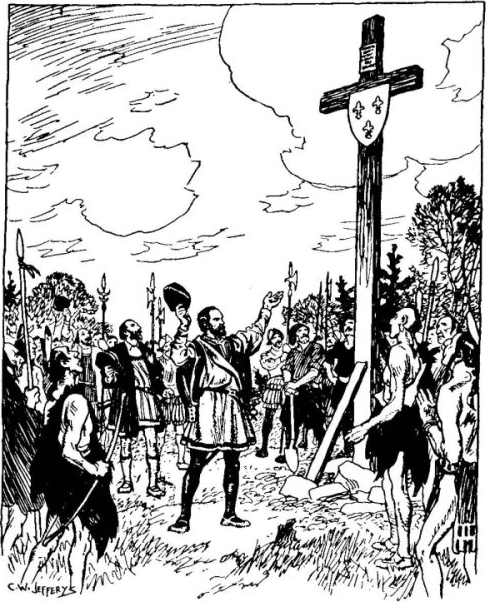The History of Heraldry in Canada
The Heraldry of New France (1534-1763)
The use of heraldry in Canada did not begin, as some may think, with the accession of the country to the British crown. The French regime of New France had a long and vibrant heraldic tradition going back to 1534. In that year, Jacques Cartier, landing at Gaspé, erected a cross bearing the arms of the King of France, three gold fleurs de lis on a blue background.
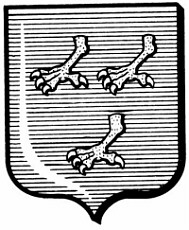
(Beddoe p.44, #55)
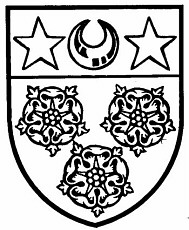
(Beddoe p.44, #52)
During the French regime, many settlers either brought previously-granted arms with them, such as those of the Sieur de Frontenac, or had them granted as honours from the French crown, as did Charles Le Moyne, Sieur de Longueuil.
In the Treaty of Paris of 1763, in which Canada was ceded to Britain, the honours granted by the Kings of France were confirmed and it was possible for the associated arms to be confirmed by the College of Arms in London - although this privilege was not used to a great extent. (For a more complete discussion of the French heraldic tradition in Canada, the reader is referred to Beddoe's Canadian Heraldry).
The Colonial Period (1763-1867)
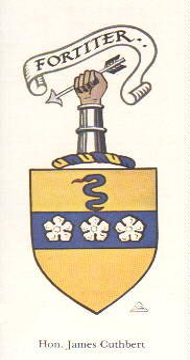
(Beddoe p.59, #83)
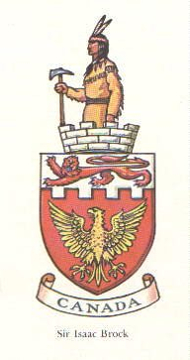
(Beddoe p.54, #68)
The century following the Treaty of Paris presents a pretty thin page in the story of heraldry in Canada. Apart from the registration of one or two previous French grants, there seem to have been a very small number of personal arms granted in the period by the College of Arms. However, because of the large number of Scots settlers, there were a few from the Lord Lyon, such as that to the Hon. James Cuthbert, Seigneur of Berthier.
One of the first known grants from the English kings of arms to someone living in Canada was that to Major-General Sir Isaac Brock - the "hero of Upper Canada" - in 1813 (Note: The original Letters Patent are archived with the Canadian Heraldic Authority, and the date of the grant which is recorded on these Letters Patent is 13th of February, 1813. The date appearing in Beddoe's publication is incorrect.). Unfortunately for Canada, he met his death at Queenston Heights before the letters Patent arrived from England. There may have been a few grants to Canadian colonials between the 1812 war and Confederation, but there seems to be no way of determining who they were.
Post Confederation (1867 - 1988)
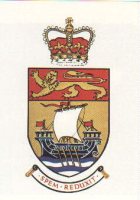
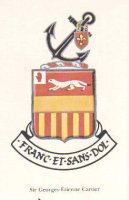
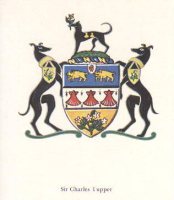
1867 roused a flurry of official interest in heraldry in the new Dominion. Queen Victoria assigned arms to the four original Provinces in 1868 and some of the Fathers of Confederation were given titles such as Sir Georges-Etienne Cartier, Sir Alexander Galt and Sir Charles Tupper. Starting from this official interest at the time of Confederation, the use of heraldry in Canada seems to have taken off quite remarkably, compared to the period before. Not only personal arms but those of institutions - provinces, municipalities, ecclesiastical bodies, universities and schools, organizations and commercial concerns - became increasingly in use across Canada.
The one feature common to all these diverse heraldic achievements, however, was that, although they all belonged to Canadians or Canadian institutions, they all had to be sought from Britain - either from the College of Arms in London or from the Court of the Lord Lyon in Edinburgh. This was a time-consuming and expensive business, with all negotiations about design having to be conducted by trans-Atlantic mail. As well, it largely obviated the use of purely Canadian symbols and any expression of a Canadian heraldic personality or style.
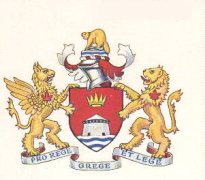
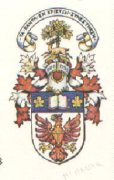
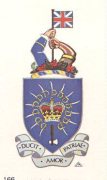
The Canadian Heraldic Era (1988- Present)
All this was to change on June 4th, 1988. On that date, a major objective of the Heraldry Society of Canada became a reality. Prince Edward, standing on the steps of Government House in Ottawa, read out Royal Letters Patent transferring to the Governor General the exercise of Her Majesty's heraldic prerogative in Canada. Now, for the first time, Canadians had control of their own heraldic affairs. From this event was born the Canadian Heraldic Authority (CHA) as part of the Governor General's Household.
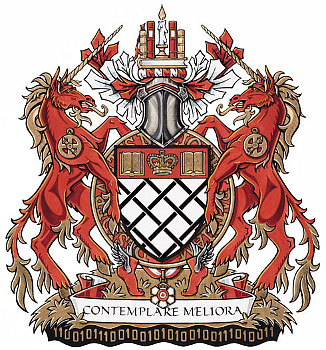
David Johnston
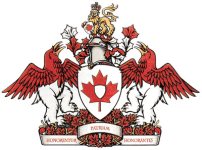
Briefly, this consists of a Herald Chancellor, a Deputy Herald Chancellor, a Chief Herald and a number of Heralds, who collectively process grants of arms to Canadians and Canadian institutions on behalf of the Governor General, representing the Sovereign. For details of the Authority and information on applying for a coat of arms, click obtaining a grant of arms.







